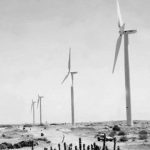They all talk about wind power. There is no doubt that renewables including wind are imperative as part of the energy mix. It is environmental friendly and there is no variable cost of fuel. However, having wind power without planning of demand and evacuation capacity could have its repercussions. Pakistan is in its nascent stage of using wind power. The country is doing experiments. It is important to learn from mistakes. Here effective cost of wind plants to the consumers is computed to evaluate the merits without having necessary infrastructure.
The wind corridor potential is estimated at around 50,000 MW in Pakistan which is almost double the country’s existing peak demand. But wind cannot work as baseload. The energy production is erratic and is dependent on wind and its timings. The earlier plants erected have load factor of around 31-32 percent and newer plants are operating at 38-39 percent. This means the actual potential is roughly 18,000-20,000 MW.
In 2017, the capacity installed was 750 MW and is now increased to 2,000MW. Still a long way to go. But before getting too excited, the issue of evacuation and lowering the losses of distributor has to come down to sane levels.
Just to illustrate, the effective pricing is deciphered. Earlier plants like FFCEL, Foundation, Gul Ahmed etc (of around 750 MW) have levelized tariff (across 25 years) of 14.5 cents. The tariff in earlier years is around 18 cents. This year, the cost is indexed at June PKR USD parity of 160.5. The tariff in PKR is at Rs23 per unit. The grid does not have capacity for full evacuation. But contractually, government has to pay fully on power production irrespective of how much is evacuated.
Industry experts are saying that around 50 percent is evacuated. This takes the evacuated cost per unit at Rs47. The energy is supplied to HESCO. The DISCO has T&D losses of around 31 percent and recovery of around 80 percent. Incorporating for this wastage, the effective cost of the service is around Rs75 per unit. In case of new plants, the levelized tariff is at 4.5 cents. Now economics is making some sense. Still the actual cost per consumer is at Rs24 per unit.








